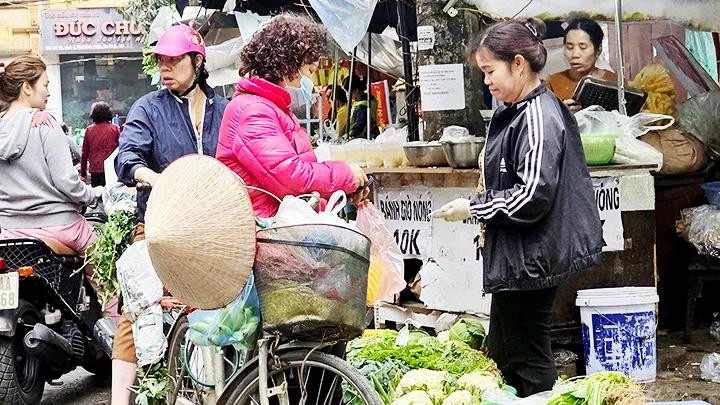Since the beginning of the year, global commodity markets have witnessed various fluctuations due to political, economic, and social factors across different countries. Strategic competition among major powers has intensified, with the US’s new tariff policies escalating trade tensions and impacting global supply chains. Central banks continue to monitor and adjust monetary policies in response to inflationary pressures.
Inflation within control
Domestically, the Government and the Prime Minister have proactively and decisively directed ministries, sectors, and local authorities to implement numerous solutions to remove difficulties, promote growth, maintain macroeconomic stability, and control inflation. Specific measures include ensuring smooth operations in the supply, circulation, and distribution of goods and services; lowering lending rates; stabilising the foreign exchange market; and accelerating public investment disbursement.
In addition, the government has launched credit packages to support certain sectors and industries; reduced value-added tax (VAT) for some goods and services; lowered environmental protection tax on fuel; and offered tax, fee, and land use payment reductions or deferrals to assist businesses and citizens. Authorities are closely monitoring supply-demand dynamics and price movements of essential goods to adopt appropriate regulatory responses.
As a result, the prices of goods and services have remained generally stable, with inflation under control. The consumer price index (CPI) in the first quarter rose by 3.22% compared to 2024.
Based on these results, Dr Nguyen Duc Do, Deputy Director of the Institute of Economics and Finance under the Ministry of Finance, predicts that inflationary pressures may ease significantly. The ongoing trade war between the US and major partners such as China, the EU, Japan, and Canada could push the global economy into recession, driving down the prices of basic commodities. Furthermore, Vietnam's exports are likely to face downward pressure due to US counter-tariffs, which may slow down investment and GDP growth, increase unemployment, and reduce purchasing power.
Given this weak aggregate demand, the government is likely to be cautious in adjusting prices for services such as healthcare, education, and electricity. Inflation for the rest of the year is likely to decline year-on-year, with average inflation expected to hover around 3%, with a higher probability of staying below that level.
Keeping inflation under 4.15%
According to Dr Ha Thi Cam Van, Senior Lecturer in Economics at RMIT University Vietnam, higher US tariffs increase the cost of Vietnamese exports, undermining competitiveness in the US market and reducing market share. This results in a drop in export turnover, which could lead to a trade deficit or reduced surplus. Lower exports also mean reduced USD inflows, creating pressure on the exchange rate. The Vietnamese dong may depreciate, raising input costs for businesses importing raw materials and machinery. This pushes up domestic production costs and affects profit margins and consumer prices.
In its latest Vietnam economic update, Standard Chartered Bank Vietnam warned that inflation may rebound, complicating the domestic recovery process and posing challenges for the central bank. A key factor would be the interest rate differential. Over the longer term, the sustainability of macroeconomic stimulus measures will influence the strength of the USD. Domestic and foreign investors might shift towards inflation-hedging assets if uncertainty persists.
Nguyen Thu Oanh, Head of the Price and Service Statistics Department (the General Statistics Office), noted that although inflation is still below the government's target threshold of 4.15%, complacency should be avoided. The US’s counter-tariffs are not limited to Vietnam but apply to many countries globally. As Vietnam imports a large volume of raw materials for production, high global commodity prices will drive up input costs, placing pressure on domestic businesses and pushing up consumer goods prices. Moreover, a stronger USD will further increase import costs for raw materials, fuel, and other inputs, creating additional pressure on domestic price levels.
To meet the inflation control target for 2025, the General Statistics Office recommends that the government, ministries, and localities closely monitor global inflation and price trends, issue timely warnings of potential risks, and implement appropriate responses to ensure supply and price stability. It is vital to ensure the smooth operation of the supply, circulation, and distribution of goods and services, particularly for strategic items that could be affected by disruptions in global supply chains and geopolitical tensions.
Authorities must closely track price trends of essential commodities (such as food, pork, fuel, and gas) and proactively prepare supplies during holidays to curb price spikes. At the same time, measures should be taken to stabilise prices, strictly handle violations, and prevent unfounded rumours that could destabilise the market. Price adjustments for state-regulated services should be made cautiously to avoid triggering cost-push or inflationary expectations.
A flexible and synchronised use of monetary policy tools is necessary to control inflation while supporting production, business activities, and people's livelihoods. Strengthened communication and transparent dissemination of information will help build public consensus on price management efforts, stabilise consumer sentiment, and manage inflation expectations.
















